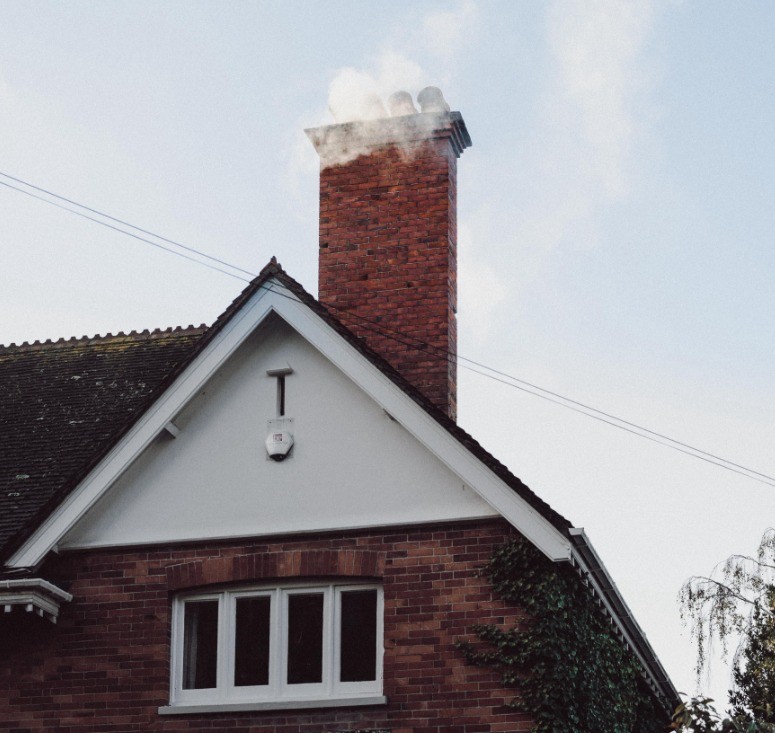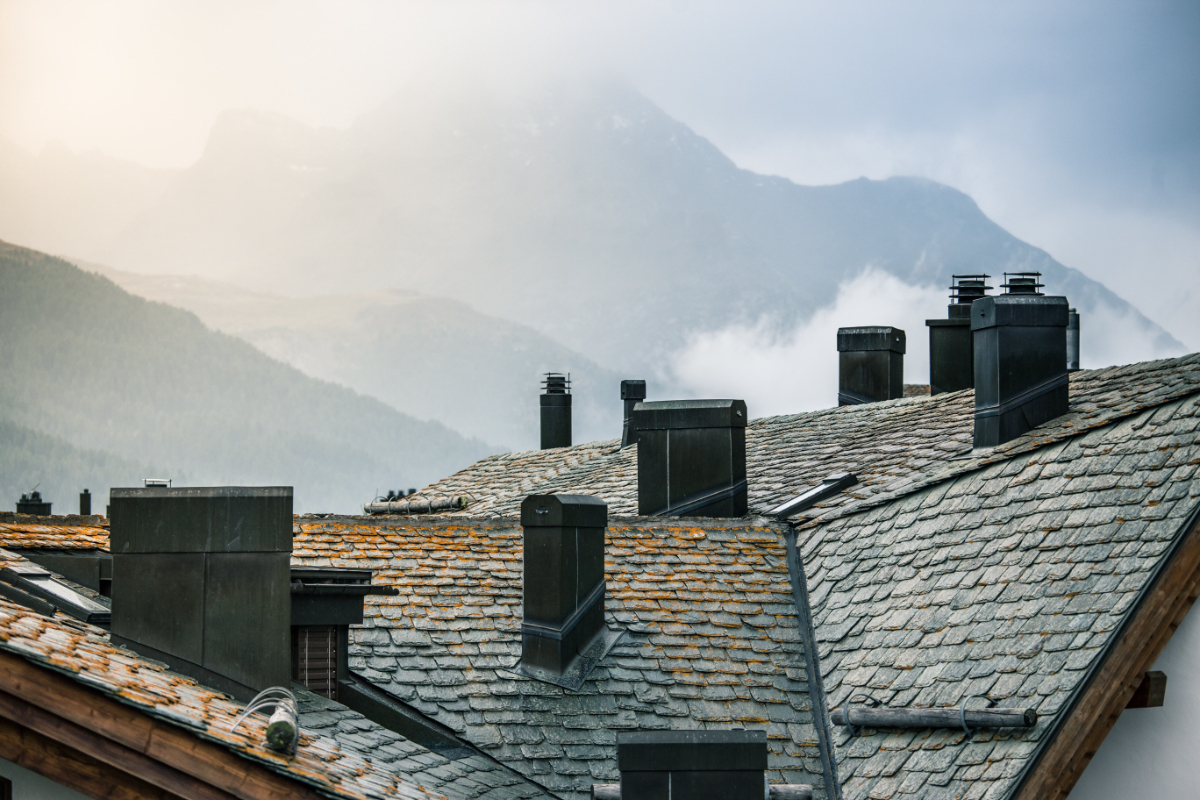What happens if you don't clean your chimney? We look at the reasons why chimney cleaning is important to the performance and safety of your chimney.
Cleaning your chimney likely isn't at the forefront of your mind; however, it is one of those household chores that you should always consider.
Whilst it's not widely discussed, predominantly because many homes across the country no longer have them, if you still have one or have one by request, you must educate yourself on how best to clean them. You typically cannot see most of the damage that the dust, ash and sooty residue do to your chimneys or flues as most of the creosote buildup is internal, sticking to the inner walls and gradually creating blockages.
There is a vast range of consequences for those that ignore their regular chimney maintenance, especially since the critical tasks required would rid your living space of harmful combustion by-products.
We also request you have a thorough inspection of your chimneys on an annual basis. We'll do our best to explain what may happen if you don't clean your chimney...
Reasons to sweep your chimney.
There are so many reasons you should sweep and thoroughly maintain your dirty chimneys for the sake of your home's structural integrity and the benefits it can have on your health.
How Do You Know If Your Chimney Needs To Be Cleaned?
Here are some reasons in further detail as to why you should invest in chimney care and get your chimney swept:
Chimney fires can be a spectacularly detrimental event that you should strive to avoid as much as possible. Its obvious warning signs of burning odour, dense, inch-thick smoke, and loud popping sounds are atrocious enough to strike fear, damage your home's integrity and put your health at risk.
In many cases, they burn slowly, proving to be invisible at times; however, these fires produce incredibly high temperatures that can very quickly make their way through the walls of your home, igniting any flammable items close by. Chimney stove fires can spread fast to the roof of your house or property, causing catastrophic damage and significant structural destruction.
If you spot any signs that your chimney needs sweeping, call your local professionals, who will immediately be willing to help.
It would be best if you cleaned your chimney correctly to protect yourself and the health and wellbeing of those living in your home or property. Carbon monoxide is a prevalent case among those that have chimney fireplaces that desperately need to be cleaned.
Breathing in fumes from solid fuels or burning wood can make the oxygen supply travelling to the body and brain vulnerable. Low levels can result in various problems, including headaches, dizziness, fainting and nausea; however, down the line, it could cause respiratory issues and even death.
Thousands die each year from carbon monoxide poisoning and other toxic gases that occur during the combustion process. The root of the problem is typically faulty gas appliances, boilers or blocked chimneys.
Smoke damage is a severe instance, and you should treat it as such. If you aren't consistently cleaning your chimney, plenty of soot will accumulate and surround your flue, resulting in a blockage that will eventually prevent smoke from exiting upwards.
It will then direct the chimney smoke back into your room, leaving an unfortunate mist of black soot along your carpeting, walls and furniture; the soot can also cause permanent staining surrounding the chimney in rare cases. Chimney maintenance isn't something you can cut corners with; otherwise, you risk playing with fire.
Cleaning your chimney regularly can prevent such happenstances. If you're unsure of completing such tasks on your own, call up your local professional chimney sweeps or chimney care specialists to complete your annual maintenance.
Whilst on the job, they can search the areas, inspecting for any significant damages they notice before heading into the autumn and winter period, where you will most likely use your heating system.
The residue that comes with burning fuel can wear out masonry, forcing property and homeowners to undertake costly repairs to rebuild or patch up its structure.
Moisture and acids created when soot mixes with water can lead to a weak mortar and, therefore, a weak chimney liner. When this acidic substance is left untended throughout spring and summer, it will drastically affect your home's structural integrity.
However, you can avoid such happenstances by cleaning your chimney almost immediately after the heating season is over (cold weather; autumn and winter).
The thought of sweeping your chimney sounds like quite an exhausting task, and we wouldn't blame you if you didn't want to do it in the first place. However, we desperately encourage you to do so!A thorough spring cleans your chimney once or twice a year will be well worth the while and benefit your household immensely.
A proper maintenance job is annual; however, ensure you use your protective gear to check the residue that collects along the chimney liner to ensure there isn't any excessive buildup. If your chimney liner builds with soot and is neglected, it will absorb all the moisture and become almost tar-like, sliding down your flue
Suppose this tar-like substance is clinging to your chimney lining, and you wish to ignite your chimney, or if there is a spot of humid weather, its moisture will cause it to evaporate quickly. Such will leave a solid substance with a shiny surface stuck to the liner, like a hardened glue inside your flue.
In this state, the substance will be challenging to remove; it will gradually reduce the flue diameter putting immense pressure on your home or property and causing a substantial risk to your house and overall health. When the heating season has passed, we advise you to sweep your chimney before it worsens.
What does chimney cleaning entail?
Chimney sweeping or cleaning is the act of taking a good quality brush and grazing the side of the chimney, starting at the top and going all the way to the bottom.
In giving your chimney a thorough sweep, you can break off any buildup of other materials that linger on the sides and clear them out when preventing dangerous chimney fires or health hazards.
Various products are emitted when wood burns outside or inside the home, and these by-products are what create the black soot you may see throughout the inside of your chimney.
Clogged layers of soot are especially flammable; therefore, plenty of the chimney cleaning process entails scraping off the soot.

Can I clean my chimney myself?
For those that are considering cleaning your chimney on their own, remember that there are a wide variety of risks and dangers that you could encounter that you must be prepared to face. During the task, you'll be clambering up ladders, trudging along steep roofs and working through tall chimneys; the job doesn't suit everybody, so be sure that it's something you want to tackle before going ahead.
To complete the job as safely and efficiently as possible, you want to invest in some high-quality tools to improve the ease of the tasks. Many of the essential tools you require are standard tools that are easy to use and don't need any official training to wield.
The most prevalent tools needed to clean the chimney include rods and flat wire-bristle brushes to rid the debris from the flue and a vacuum cleaner once you've finished clearing away the ash and dust. We also highly recommend investing in quality PPE (Personal Protective Equipment) like gloves, safety dust masks and goggles.
These will protect you, your household and any birds from harmful dust particles and soot. Suppose you inhale these substances by any means, either through the eyes, nose or mouth. In that case, you will be at significant risk of developing breathing issues, such as bronchitis, asthma, coronary heart disease and cancer.
Safety must be your priority when combating this form of maintenance work.
Do you have a period fireplace which needs repair or restoration? If you live in the Hastings and East Sussex area, our expert antique fireplace restoration services can help.
